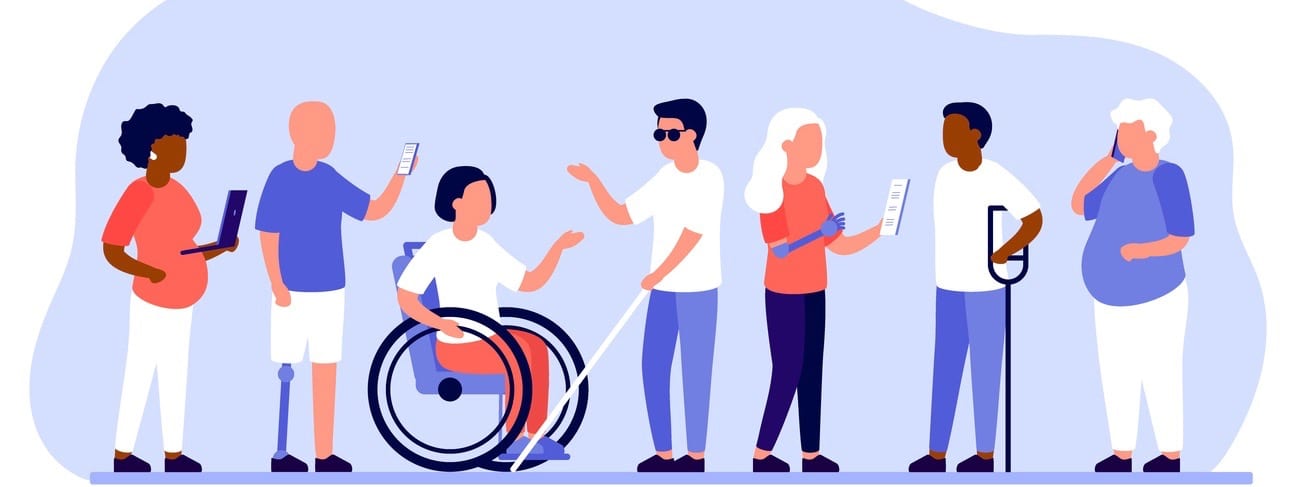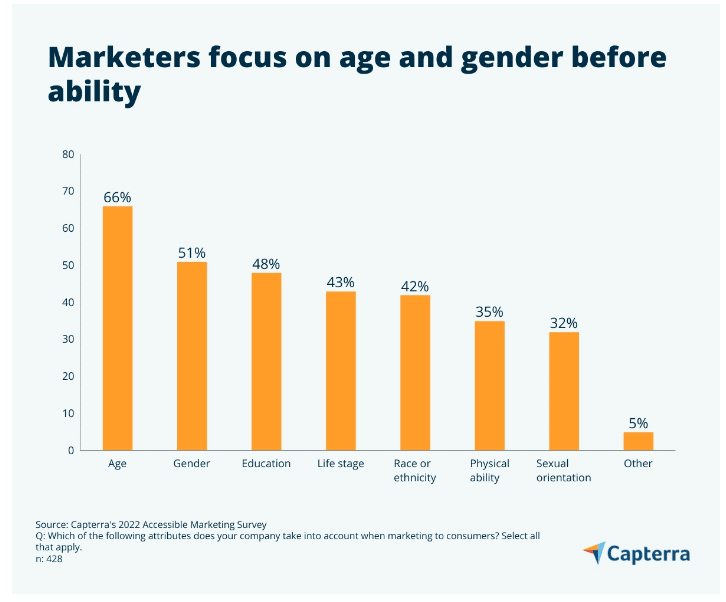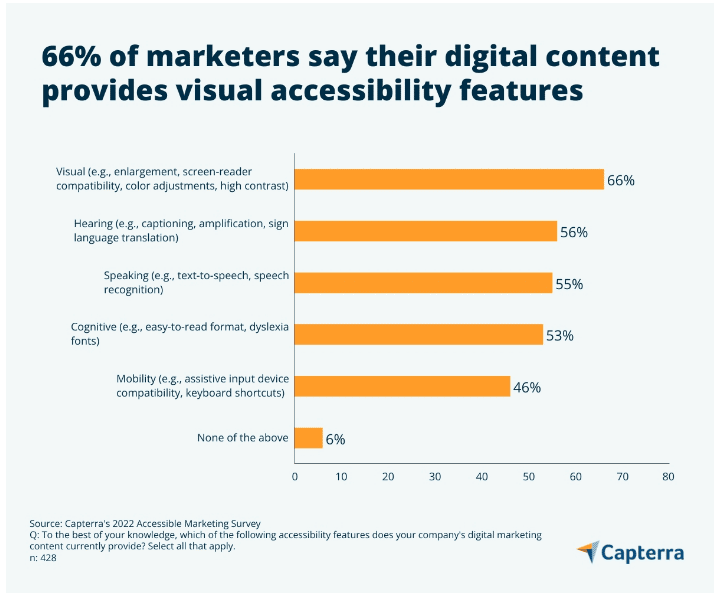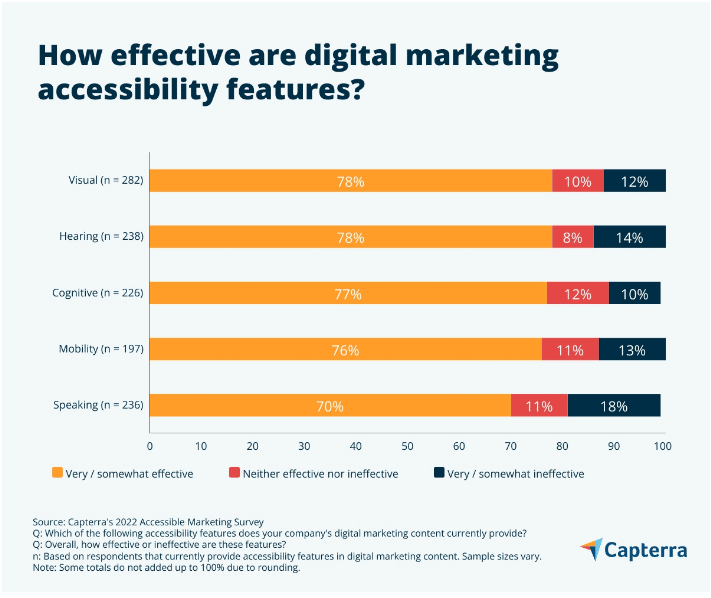New research from software reviews and selection firm Capterra finds that while one in four American adults live with a physical or mental disability, they are often excluded from digital marketing messages due to accessibility barriers.
The firm’s newly released 2022 Accessible Marketing survey finds that while 83 percent of businesses are doing more to provide accessibility in digital marketing than in the past, demographics such as age, gender and race are more often prioritized in marketing efforts.
Across different types of accessibility, marketers tend to focus on providing visual and hearing features before cognitive features. This may be because they wrongly believe visual and hearing impairments to be the most common disabilities in the U.S., when in fact, the Centers for Disease Control and Prevention report cognitive disabilities to be more prevalent (10.8 percent of Americans). While 53 percent of marketers do account for cognitive disabilities in digital content, improvements can be made to bolster features for consumers who face cognitive challenges such as difficulty concentrating, remembering or making decisions.
The survey also reveals that marketers recognize the need to be better educated on accessibility. In fact, 45 percent of marketers say that education would motivate their company to be more proactive in improving accessibility. Training can also help marketers better understand specific disability compliance laws.
Beyond the need for more education, cost and technology barriers hinder improvements to accessible marketing. Cost is the most prohibitive challenge: 69 percent of marketers strongly or somewhat believe that it’s expensive to create accessible digital marketing. One in four marketers say that the lack of technology to implement features is a top barrier to creating accessible content.
Accessibility implementation is a challenge regardless of platform. Nearly half (49 percent) of marketers rate social media as the most difficult platform to provide accessibility features for—possibly due to its ever-evolving nature that is challenging to keep up with. Despite its longevity compared to newer social media channels, 43 percent of marketers still cite email as the most difficult platform for accessibility, and 39 percent report the same for websites.
“While accessibility in marketing is gaining more traction, businesses need the right resources, including training, budget and technology, to make improvements,” says Meghan Bazaman, senior marketing analyst at Capterra, in a news release. “By taking a more proactive approach, marketers can reach more customers while generating a positive brand perception.”
Beyond just doing the right thing, businesses that have incorporated accessible marketing report improved customer relationships. Of the marketers who currently provide accessibility features, 53 percent and 44 percent say that it improves customer service and customer loyalty/retention, respectively.
Delivering accessible marketing is beneficial, but it’s an ongoing process in an evolving online environment. Accessibility software and free online resources can help marketers implement accessibility features.











